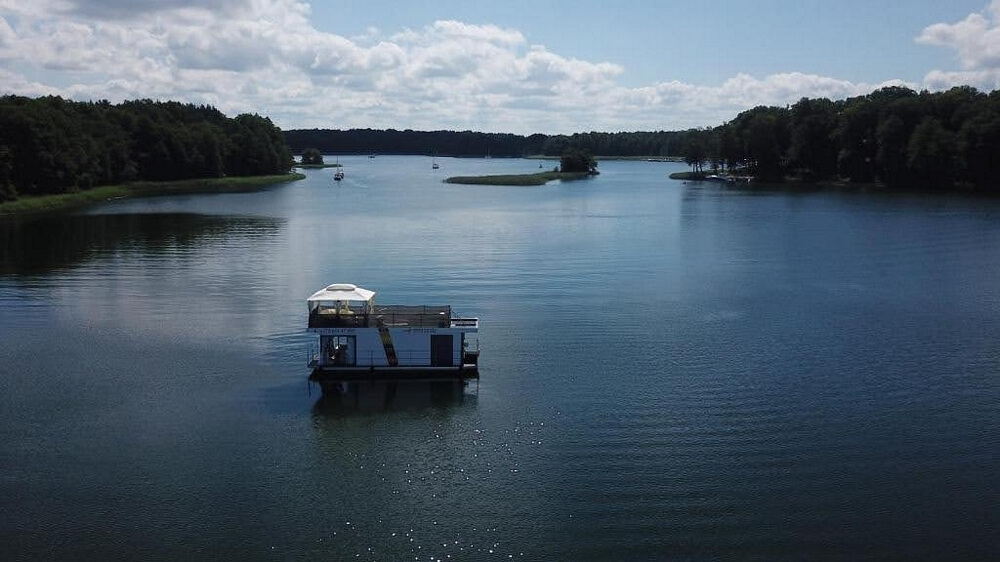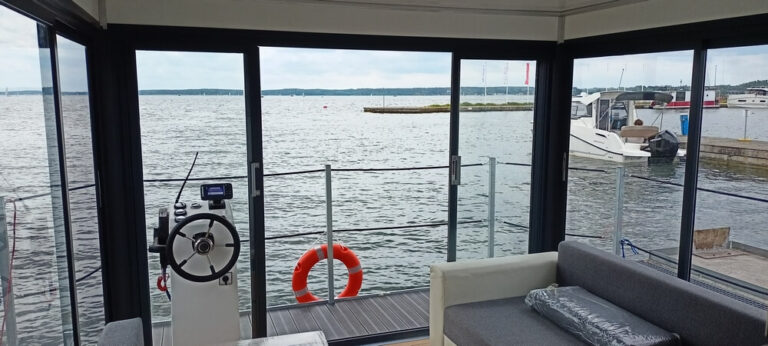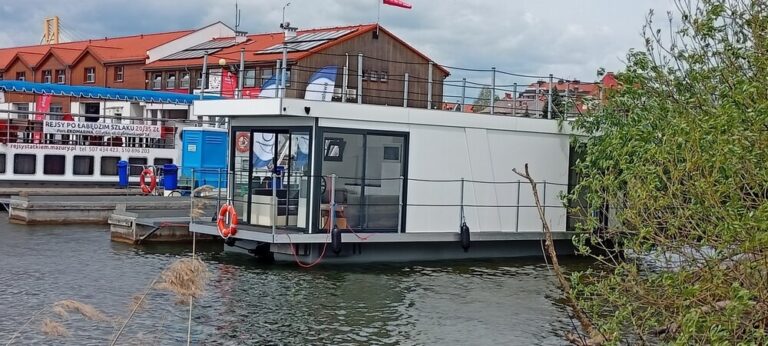
History of housebouts.
The construction of houses on the surface of water has accompanied mankind for hundreds of years. Solutions of building houses on stilts above the water surface are still very popular in Asian countries. We can see there many times entire villages located on water. However, they differ significantly from housebouts in that they are permanently fixed to the water surface with the aforementioned stilts, so we cannot move them on water.
The homeland of floating houses.
The homeland of housebouts can certainly be called the Netherlands, because it is there that they became a real construction hit and allowed people to find additional living space in crowded cities. They gained their popularity due to the specific location of the country. It is estimated that currently one third of the country’s surface is level with the sea, and it is in fear of climate change and rising sea levels that many Dutch investors are securing property in this way. Floating houses, which are moored by the canals in the larger Dutch cities, have the surface area of traditional detached houses, reaching up to 150 square metres. A very interesting example is the villa de Om val, which has 2 floors and an additional mezzanine permanently submerged underwater, where an unusual bedroom is located. In addition, the villa has two terraces – one directly above the water surface and another on the roof of the building. The villa has all the conveniences we could hope for in a traditional house, such as a guest room, dressing room, study, office and plenty of space.
Floating houses in central London.
Another place where floating houses have found their place is central London. There has been a shortage of housing space in this city for years, especially in the centre. The solution to this problem are the houseboats, which have as many as three storeys. According to the idea of Polish architect Marcin Panpuch, the first level can be used as a warehouse and equipment storage, the next one as a bedroom, and the highest level, which is fully glazed, serves as a living room. The buildings are very well lit, but their inhabitants can count on the desired privacy thanks to roller blinds that effectively block out everything from the eyes of passers-by.
Floating houses in Poland.
The topic of housebouts in Poland is developing more and more, although more often such houses are intended for tourism than for housing, because we still do not have precise legal regulations which could regulate it. At the moment it is not possible to be registered in this type of house on water. This does not mean, of course, that the market stops. Floating homes are very popular in the tourism industry because it is a brilliant solution for people who want to relax surrounded by nature without giving up the comforts that their home offers. It is for this reason, on lakes and rivers, that more and more of them are appearing every year.
The future of housebouts in Poland is really promising. The trend of building them and using them in the tourist industry will surely continue, as there is a great interest in this type of recreation. However, as far as living in floating houses is concerned, it is not known when the appropriate legal regulations will be established. As it is, housebouts are still registered as yachts without an address, so we can forget about a visit of the postman or a courier. This situation is bound to change, as there is still not enough space in the larger cities and lakes and rivers remain undeveloped.


